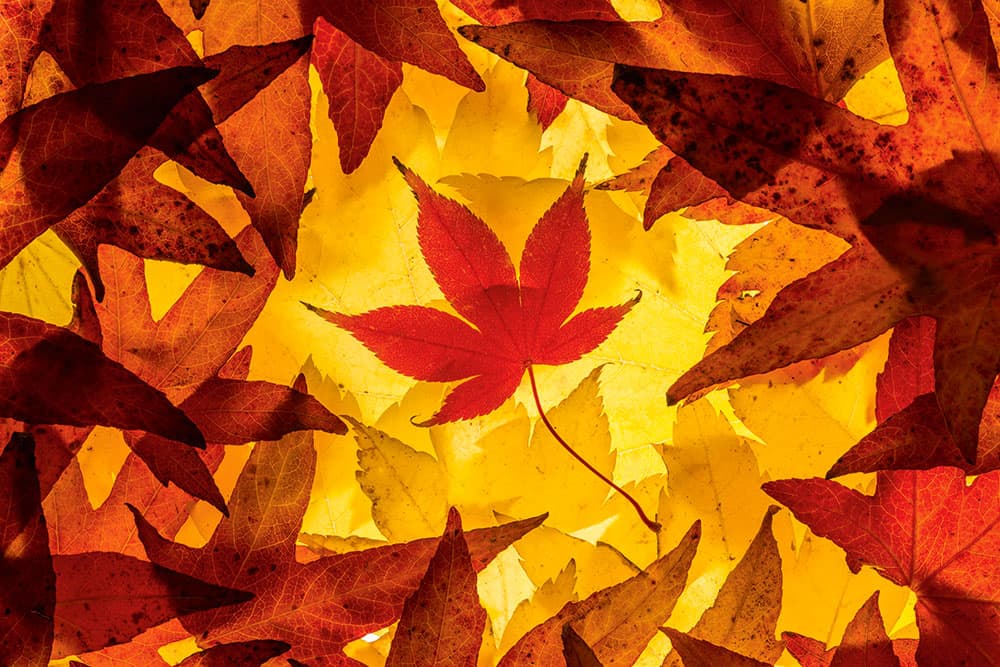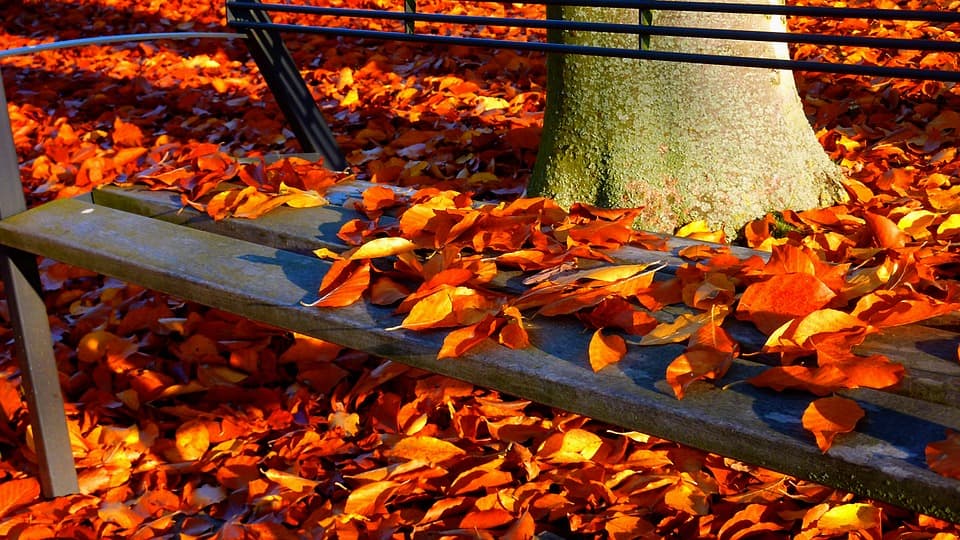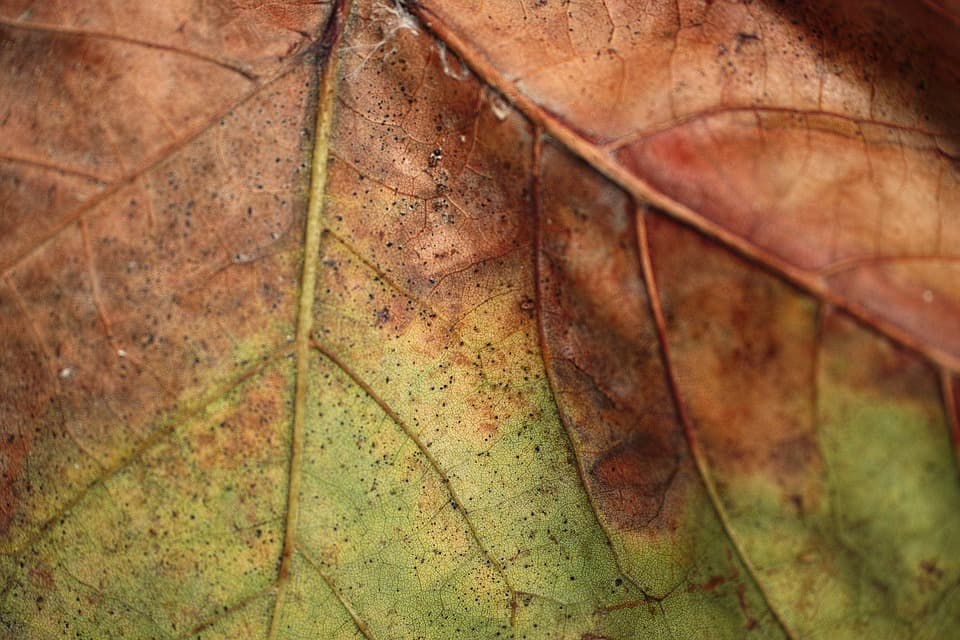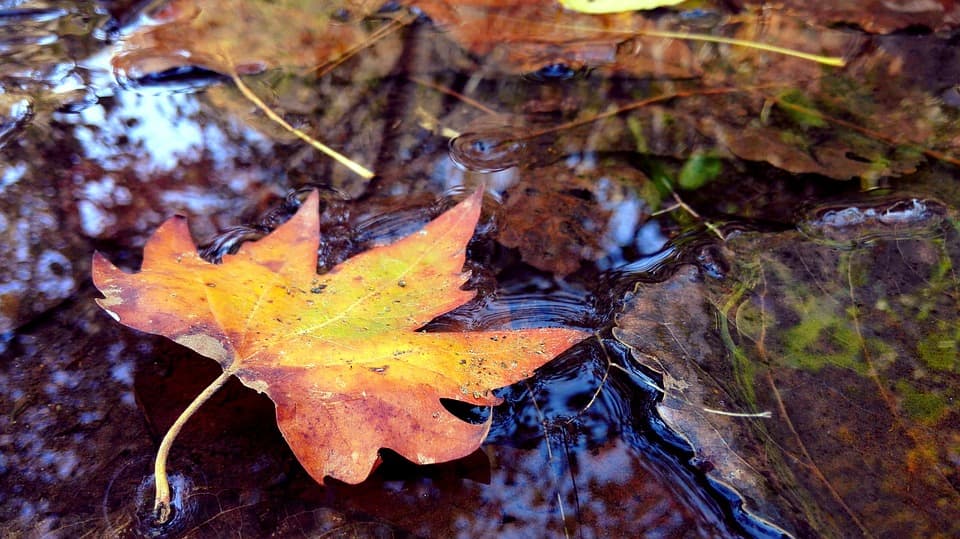Photographing autumn leaves in all their splendour can be a tricky ask. When summer turns to autumn, the shorter days cause leaves to turn rich shades of orange, yellow, brown and red.
This natural spectacle presents photographers with plenty of opportunities for shooting close-up abstracts, grander vistas and pretty much everything in between.
At this time of year gusty days and nights can strip the trees bare in a matter of hours, so don’t waste time waiting for precisely the ‘right’ conditions – just get out there and adapt your plans accordingly.

Credit: Ross Hoddinott
1. Use a lightbox
If you still have a lightbox lying around, put it to good use by arranging leaves or other translucent objects on it. Select specimens with well-defined shapes and good venation. You might like to press them under a book for a few hours beforehand to prevent them from curling up.

2. Try a support
When the wind rises above 5mph, plants tend to blow about quite a bit. To keep everything steady wait for a lull in the breeze or use one of the following: floristry wire (to fix your subject to something steady); a Wimberley Plamp (seen here) to hold a small branch still or a windbreak.

Credit: Tracy Calder
3. Look for skeletons
If you slow down and look around, you might notice some skeleton leaves. These delicate structures have veins resembling road maps and can make attractive compositions. Think about the background behind the leaves; go for something plain or lightly textured. This type of subject often suits the black & white treatment.
4. Watch the weather
While it might be tempting to wait for clear-blue skies, photographing autumn leaves is often best in bright but overcast conditions. If you can’t wait for cloud cover, use a diffuser to eliminate harsh shadows. You can enrich colours by underexposing a touch. Try to avoid wind, but don’t shy away from frosty conditions.

Credit: Moritz320/Pixabay
5. Shoot en masse
When autumn leaves create a mass of colour, the result can be pleasing. You are unlikely to find hundreds of leaves in perfect condition, so select your favourites and arrange them on a suitable surface. You will need more than you think to fill in the gaps.
6. Try unusual accessories
Tweezers, paintbrushes and fishing line might seem like strange objects to pack in your kit bag, but each one has its place. Tweezers can be employed to remove dead leaves or stray debris from a scene; paintbrushes are ideal for transporting insects into new positions; and fishing line can be used to hold distracting foliage out of the frame.

Credit: PRIO4D/Pixabay
7. Don’t forget the traditional rules
If you are photographing autumn leaves close up, don’t discount the ‘traditional’ rules of composition. You can still apply the rule of thirds, for example, and many cameras come with an electronic grid for this purpose. What’s more, lead-in lines can also be useful, with diagonals providing a sense of energy.

Credit: Marcelo Kato/Pixabay
8. Move the camera
For a more expressionistic shot of autumn leaves, ditch the tripod and try ICM (Intentional Camera Movement). Deliberately moving the camera during a long exposure results in washes of colour that are more akin to painting than photography. To extend the shutter speed you may need an ND filter.
9. Make tiny adjustments
If you would like to make tiny alterations to a close-up composition, consider a positioning plate or focusing rails. These devices sit between your camera and tripod and allow you to make seriously small adjustments by moving the camera, which is the preferred method of focusing when shooting at such high magnifications.
10. Visit a garden
Unless you want to emphasise age or natural decay, spend some time tracking down a perfect leaf specimen. Bear in mind that if you are shooting a close-up view, any blemishes will be much more obvious. As a result, it can pay to visit a formal garden where much of the pruning has been done for you by keen gardeners.
11. Apply colour theory
Colours that sit opposite one another on the colour wheel (such as blue and yellow) are complementary, and create maximum contrast. Use this when photographing autumn leaves to your advantage by looking for such combinations in nature. Colours that sit next to each other are known as analogous, and are harmonious.

Credit: Engin Akyurt/Pixabay
12. Show a part
Sometimes showing part of a leaf can be much more interesting than including it in its entirety. You might decide to concentrate on the blade (the flat part), the petiole (the leaf stalk) or the midrib (the central vein). Consider what attracted you to the leaf in the first place and make that the focus.
13. Refine your focus
When depth of field is limited, accurate focusing is essential so switch to live view and use manual focus. Small adjustments can make a huge difference, so turn the focusing ring very slowly and observe the results on-screen. The viewer’s eye will always be drawn to areas that are in-focus first, so bear this in mind when you’re looking at the screen.

Credit: Ismail Demirbas/Pixabay
14. Mix leaves with water
Photographing autumn leaves reflected in lakes and ponds is usually a great idea, but there are other ways to combine foliage and water. One is to locate a stream, look for leaves drifting along and employ a slow shutter speed to transform them into a colourful blur. Another way is to look for reflections of branches in shallow water and include what’s underneath the surface.
15. Shoot into the light
Shooting into the light can lead to striking images. Where possible, half-hide the sun behind a branch, tree trunk or cluster of leaves. Try to experiment with lens flare too – you may be pleasantly surprised at how effective this ‘mistake’ can be – it often conveys a feeling of energy. Naturally, it’s important to avoid looking at the sun either directly or through the lens.







